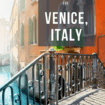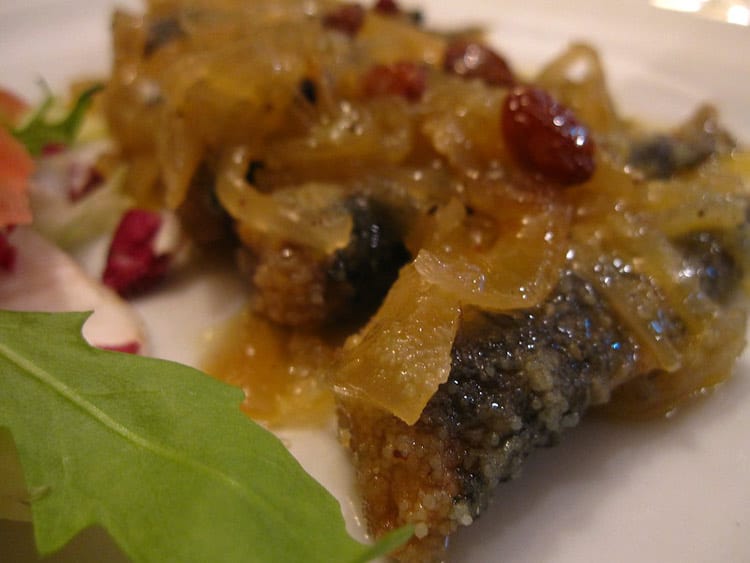
Editor’s Note: We’re all dreaming of travel ahead. Here’s some inspiration for future adventures. We share places, products and activities we recommend. If you make a purchase using a link on our site, we may earn a commission.
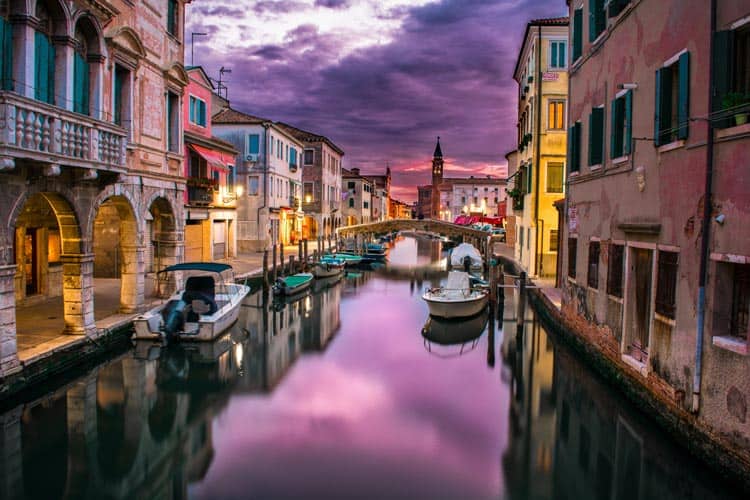
Getting Lost in Venice
I was in Venice, Italy and running 20 minutes late when I found my fellow bacari crawlers. I was impressed by the number of people—Italians and “stranieri” alike—gathered in the square, conversing, laughing, and gesticulating. I adore the gesticulating Italians in Venice.
They are easily the world’s greatest hand communicators. That’s not to say they are not capable of expressions, on the contrary, they are also adept at facial communication. I am surprised that nobody has deciphered them all and written a book about these unique forms of conveying myriad thoughts and emotions. Perhaps I will.
Many couples, young and old, were holding hands and kissing and stroking each other adoringly. Giordano, Clara, Michael and Katherine were talking amongst themselves when I approached them.
“I can’t believe I found you,” I said.
“I told you it would be easy,” Giordano replied.
I looked at him incredulously. “It’s hard to get lost in Venice,” he added, believing wholeheartedly what he had just said.
“As long as you can find the Grand Canal, you’ll always be fine,” Clara said in agreement with her boyfriend.
“It’s like a great big maze out here, and we are all little mice attempting to find the center and a treat, in this case little Venetian edibles,” I said honestly.
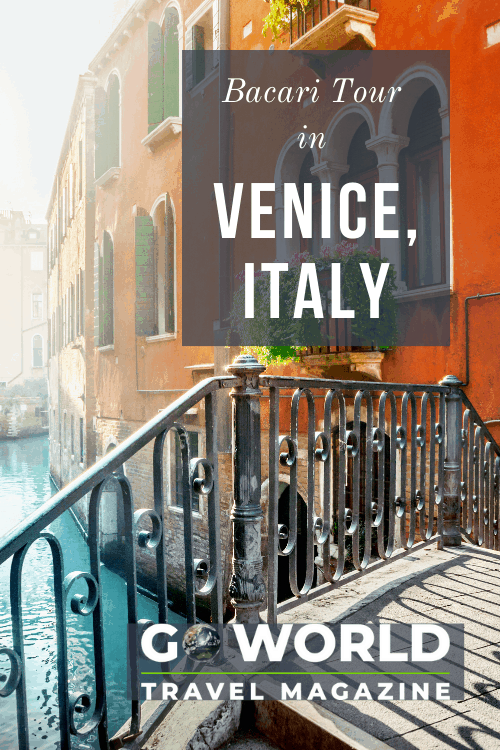
The Surreality of Listening to Venetian Music in Venice
Giordano, Michael and Katherine are architects. Clara runs the day-to-day operation of the B&B. We hit it off immediately and agreed that the eating and drinking together should begin as soon as possible. Giordano, a bit of a Venice historian, led the way.
As we walked, I could hear the dulcet sounds of Vivaldi, then Albinoni and I immediately felt at home. I love Venetian music. After all, it was a Venetian, Claudio Monteverdi, who invented the modern opera and orchestra. Vivaldi never fails to uplift me. Albinoni’s music relaxes and enchants me.
“I’m really here,” I said quietly to myself, still not fully comprehending that I had at long last realized my dream to visit Venice. I wanted to pinch myself but refrained. I had heard the same music back home but now, to be in the composers’ birthplace, to listen to their music, where it was created during the wonderful Baroque, I was nothing short of enraptured.
The Venetians are mighty proud of their musical heritage, despite the fact that in Piazza San Marco, Viennese waltzes are often heard. That’s Venice pandering to the tourists, something at which she excels.
We walked to a destination known only to Giordano and Clara. We passed countless restaurants, trattorie, osterie, enotechi, etc., as we ambled through the dimly lit, narrow back alleys of Venice. I wondered what it must have been like before the advent of electricity. There must have been very little visibility, as it was difficult to navigate as it was.
That didn’t deter the masses from coming out and partaking in the evening’s passeggiata (the stroll that Italians take before and/or after eating dinner). It wasn’t going to stop me, either, as I was determined to actualize my goal and have something uniquely delicious about which to write.
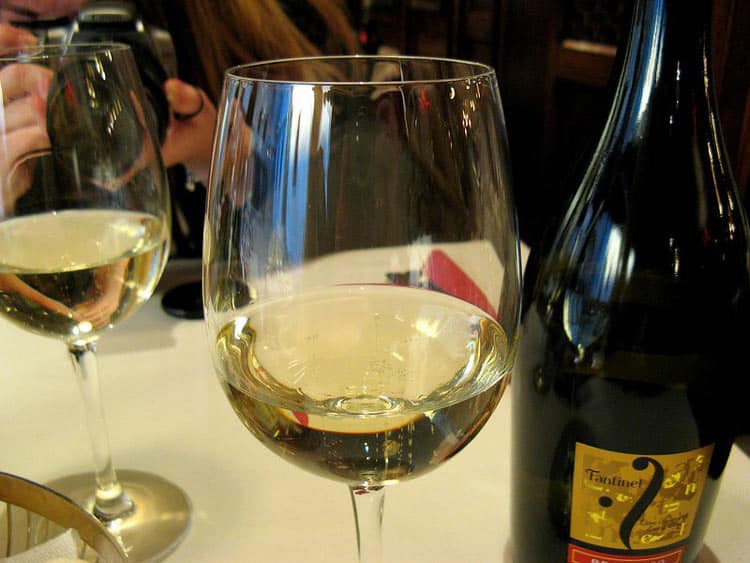
Bacari Tour, the Italian Pub-Crawl
At last, we found ourselves standing at a counter in a cozy little pub-like bacaro, Antico Dolo.
“This is our first stop,” Giordano informed us. “This is a very popular bacaro. I come here all the time.”
We approached the counter. I covetously eyed the generous array of Cicchetti on display—some recognizable, others utterly foreign—and had to struggle to keep from salivating.
“This is one of my favorites,” Giordano said as he perused the plates of little bites before him. “You must try the baccala mantecato,” he urged excitedly. “It is fantastic.”
I had read about this dish, which is salt-cod whipped with a little olive oil, milk and a hint of garlic.
“Here they spread it on little polenta squares,” he added. Then, he ordered for us.
My stomach continued growling in both anticipation of what was to come and to protest that it had been shunned for too long. Katherine and Michael were unfamiliar with the bacari concept, so I explained it to them.
“The Venetians have been partaking in this little ritual for a long time now. They will stop at various pubs and wine bars and snack and drink.
Prosecco Wine and Delicious Cicchetto in Venice
“They do this both during the day and at night.”
They seemed very interested, so I continued. “Nobody really knows when or how it initially started, but legend has it that some time ago, wine sellers in Piazza San Marco would move their wine carts into the shade as the sun made its way across the Venetian sky; that is, when the sun was out. The Venetian word for shade is “ombra,” and this word ultimately came to mean a drink of wine, particularly Prosecco, which is produced only in the Veneto region.”
“Oh, we’ve tried Prosecco back in Australia,” Katherine interjected, “and we really like it.”
I nodded in agreement. “That’s what they love to drink here,” I said. “I drink it all the time back in the States.”
The place was quickly filling up and, because it was getting a bit stuffy inside, we decided to move the party outside. Giordano soon emerged with a plateful of the night’s first cicchetto.
He extended the plate to each of us. “Now the Prosecco,” he said, and he and Michael reentered the bacaro to get the sparkling wine, which I had come to love back home, long before my departure to Venezia.
I took a nibble of my baccala mantecato cicchetto and was surprised at how mellow and balanced the flavors were, not to mention how surprisingly “un-fishy.” I would liken it to the whipped whitefish I used to buy at the Jewish delicatessens in New York City but slightly Italianized what with the olive oil and garlic. Instead of smearing it on a bagel or bialy, however, they spread it on crostini and other edible plates.
Now, it was time for the wine tasting in Italy.
The Prosecco was seductively soft and bubbly, not nearly as assertive as Champagne and superior to anything I had sampled in the States. The cacophony that night—foreign babble, laughter, popping corks, Bangladeshi men selling roses—was reminiscent of a New Year’s celebration: pure and unmitigated revelry, and I was more content than I had been in a long time.
My fellow merrymakers were all extremely interesting, warm, and generous with their smiles and good cheer. We bonded immediately, continued raising our glasses, saying “cin, cin” in unison each time, hoping the evening would last for a blissful eternity.
Get stocked up on your favorite Italian wines before you go to Venice through Wine.com. Chat with wine experts about your preferences and regions from around the world to try and have them curate the perfect selection for you. Check out the Italian selection here and get the bottles delivered to your door!
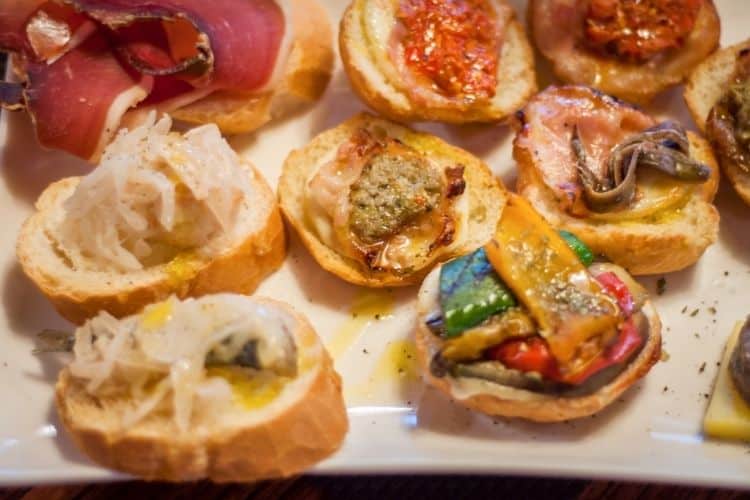
The Next Bacaro in Venice: Cantina Do Mori
We all agreed that the baccala mantecato was fantastically delicious and that we should move on quickly to the next bacaro to sample some more Venetian delights.
Onward we walked, through the narrowest streets I had ever seen. Our destination was Cantina Do Mori where we enjoyed sarde in saor, a quintessentially Venetian delicacy: fried sardines marinated with olive oil, vinegar, onions, raisins and pine nuts.
“Absolutely authentic,” Giordano assured me. “And molto buonissimo!” he added as we followed him into the bacaro. When I had first read about this combination of sweet, sour and savory flavors, I was certain I would find it unpalatable, if not downright disgusting.
I was terribly mistaken. The odd combination of ingredients worked exceptionally well together—the fish was tender, flaky and mildly sweet, not at all overpowered by any single ingredient. It was unlike any fish I had ever tasted: delicate and subtle and delectable. At one point, Giordano inspected my plate and asked, “Don’t you like it?”—probably because, unlike him, I had dared to leave a few slivers of fish uneaten.
“Yes, I like it very much,” I replied, then quickly and dutifully devoured the few scraps that remained on my plate.
“Bravo,” he praised. “You want some more?” he asked, smiling widely.
I was tempted but opted to try something else, knowing the selection from which to choose was great indeed. More cicchetti came our way: delicious, succulent meatballs made from mortadella, ham, eggs, cheese, rolled in breadcrumbs and deep-fried; tramezzini (sandwiches) stuffed with a huge variety of savory fillings, from salami, to prosciutto, to more exotic combinations that cause me to salivate even as I write this.
We washed it down with more of my beloved Prosecco. “Cin, cin!” The Prosecco, I cannot emphasize enough, is remarkably light and subtle and tasty—it doesn’t take any attention away from that which is being eaten with it. It is a perfectly refreshing, enhancing, well-behaved wine. It is only a matter of time until it catches on around the world.
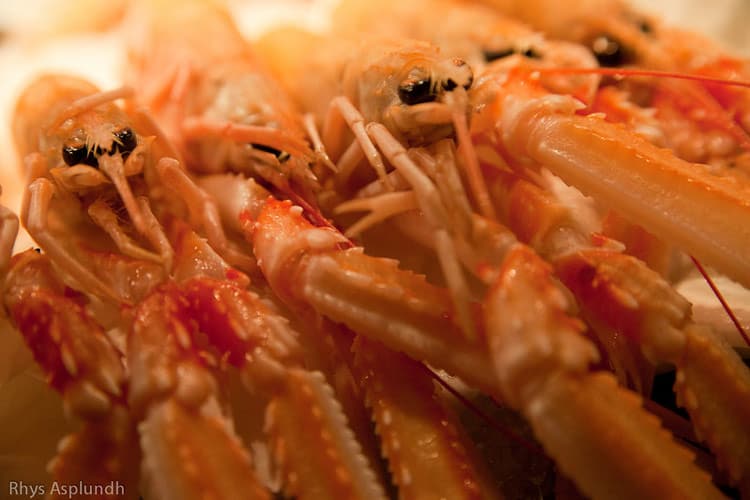
The Cost of a Bacari Tour
All the wonderful little bites and great wine and high spirits and mutual fondness between the party that night notwithstanding, I must confess that, because the dollar cannot hold its own against the Euro, this feast was far from inexpensive.
The comestibles, to be sure, were not at all cheap; the wine, on the other hand, was most reasonable: about $1.50 per glass. But it was all worth it considering the sheer satisfaction they provided as they filled the void in my stomach.
As time passed, the more crowded and impassable the streets became. I felt as though I were walking down the busiest street in Tokyo, sans the blindingly bright neon signs, omnipresent pachinko parlors, and the occasional beautifully clad geisha. It was exhilarating. One big Venetian party with new friends and strangers and good food and drink.
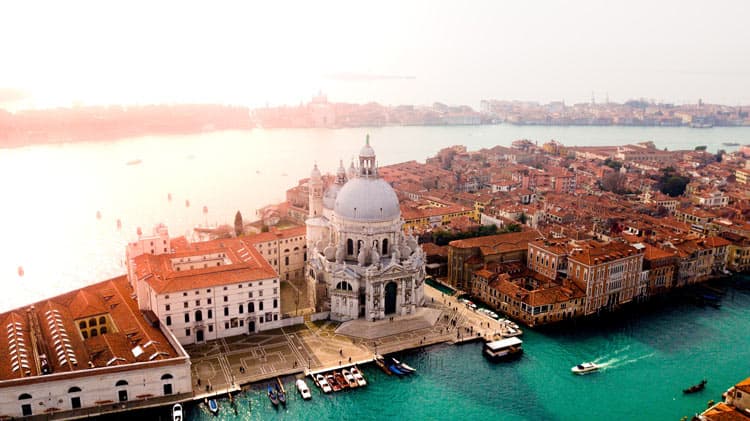
Standing Room Only at the Vivaldi Bacaro in Italy
We pushed on this time, we found ourselves at an extremely popular bacaro named “Vivaldi.” Surprisingly, I did not hear the Four Seasons or the Mandolin Concerto, but incessant talk and laughter and toasts to life, friends, good food and drink and, of course, Venice herself.
There was no room to either sit or stand inside, so we ordered our cicchetti, the wine, and reentered the night and the symphony of foreign chatter. We stood outside the bacaro and snacked and toasted, laughed and admired the motley parade ambling by us: a constant flow of humanity all eager to satisfy prodigious hunger of both the stomach and the heart.
This was romantic Italy, after all, and love and affection and adoration were saturating the already balmy night. Ah, bella, romantica Italia, I said inwardly, fully contented and relishing every moment of the night, all my senses satisfied—yes, by this time, I had grown to appreciate even the stench in the air.
Vivaldi is best known for its fish, particularly the deep-fried variety, which I found uncommonly delicious and nearly devoid of grease: shrimp, calamari, scallops, white-bait—it was all served up piping hot, crispy, fresh, not to mention perfectly cooked. The seafood was prepared to just the right point of doneness—no rubbery calamari or stiff, inedible shrimp at this place; just a heavenly array of fruits of the Venetian lagoon and the Adriatic, “frutti di mare,” as Italians rather like to refer to a medley of seafood.
Briefly, my memory was transported to Japan once again and the bountiful seafood that is available there. Only in Japan, I rather doubt one can find a bottle of Prosecco to complement the food.
At any rate, I was in Venice, and that is precisely where I wanted to be at the moment—no, for the next six months—and I couldn’t have been more satisfied.
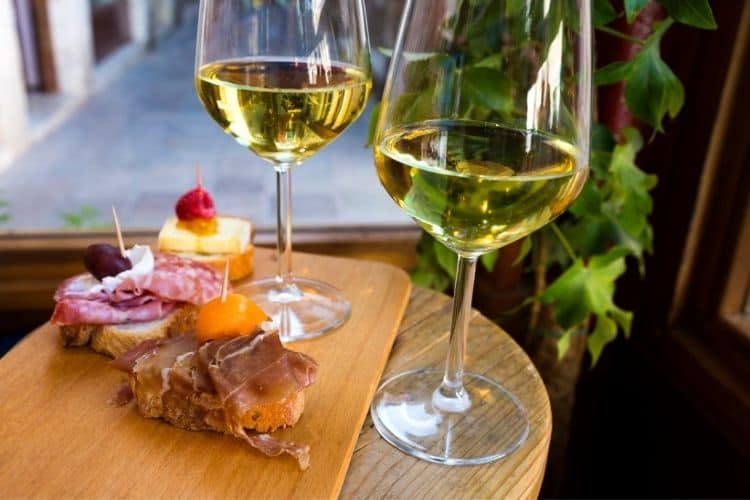
Venetian Pride
“This is delicious,” I said as I munched on baby calamari. “How do they make it so good?” I asked.
Giordano looked at me and smiled his signature smile. “We are Venetians and we are all married to the sea. We have been since Venice was founded. We know how to cook the seafood.”
We all laughed. “You Venetians are proud of your culture and history, aren’t you?” I asked, already knowing the answer. Everyone chuckled—a slightly alcoholized chuckle—and looked at Giordano, who reminded me of a college professor with his spectacles and intelligent eyes.
“Why shouldn’t we be?” he replied. “We have a long, rich history. We were the richest, most enterprising and powerful republic in Europe for centuries. People who come here don’t realize this.”
I agreed.
“They come here and see San Marco and Palazzo Ducale and often that is all,” he said with a bit of regret and sadness in his voice. “There’s much for you to see here, the art, the churches, the Jewish ghetto,” he said, “and there is so much here that is unique to Venice. What other city rises from the water like our Venice? Venice is an architectural feast for the eyes.”
“Cin, cin,” I said and raised my glass. I thought about it for a moment. I knew and shared his sentiment, even though this was my inaugural visit to the city. The average tourist knows very little about the history of this most singular city.
It isn’t merely a Disneyland, and there is much more to see than the predictable. Many tourists don’t venture beyond Piazza San Marco, and that is a colossal pity, for if they did, they would be pleasantly surprised by the many sights and spectacles.
It was time to move on to our next destination and more—thank God—cicchetti and Prosecco.
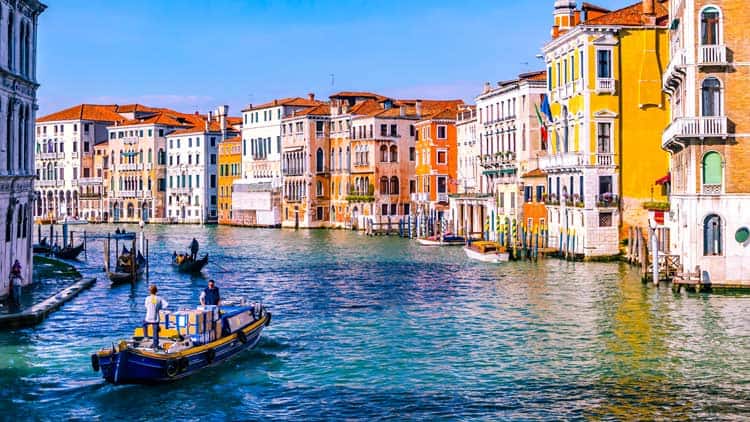
Do Spade Baraco in Venice
Do Spade specializes in the triangular sandwiches called tramezzini, which I mentioned earlier, stuffed with a surprising variety of fillings: culatello (similar to salami but fattier and far superior), prosciutto, mortadella, baccala mantecato, ham and olive tapenade, and many others. We feasted with gusto.
The Prosecco went down like juice. I am not ashamed to admit that at this point we were all a tad happy by virtue of the several glasses of wine we had each imbibed, and, despite the feasting, I was still hungry. You mustn’t forget that we had done a bit of walking during our bacari crawl and quickly burned the calories incorporated at each bacaro.
The tramezzini were out of this world. Nothing even remotely resembling the sandwiches I had grown accustomed to growing up in Chicago. The Italians, like the French, have an uncanny ability to turn the simplest ingredients into culinary art that tickles the tummy and leaves you wanting more.
I particularly enjoyed the prosciutto crostini, despite the fact that the prosciutto hailed from Parma, and the crostini are merely toasted bread rounds.
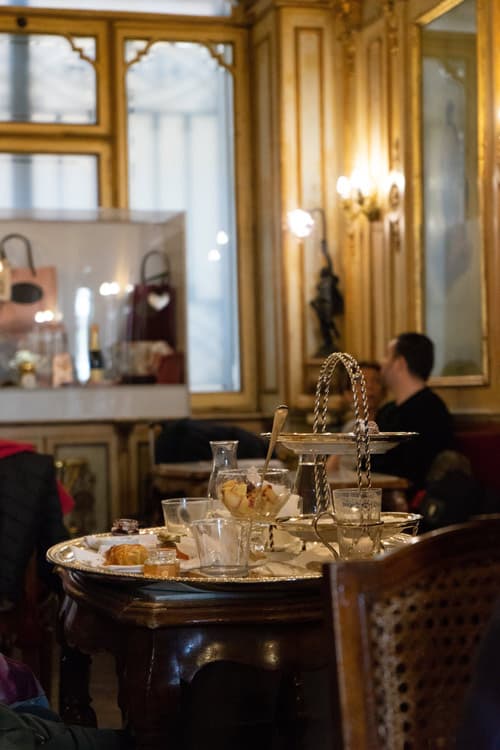
Italian Food Tastes Better in Italy
Perhaps it was the magical atmosphere, or the alcohol, or the great company I was keeping. All I know is: Italian food tastes better in Italy. The spaghetti with tomato and basil—the simplest sauce to be enjoyed—is elevated to new heights in Italy. The pizza is remarkable. The coffee beverages are to die for. Every meal is a veritable feast.
I was getting a little tired and my feet were beginning to protest; it was only a matter of time until they could tread no more. I could sense the forthcoming crescendo as the minutes ticked away and the crowd swelled.
We walked through the streets, literally rubbing elbows—and other body parts—with other merrymakers, all of whom were enjoying themselves as much as we were. We talked to several people, Italians and foreigners, doing our best to communicate.
With the Italians who didn’t speak much English, we communicated by using simple verbs, failing to conjugate as we knew not how. But it worked well nonetheless. Mangiare (to eat), bere (to drink): These were far and away the most important verbs to know on this night.
We continued our culinary adventure, stopping at several other bacari, where we sampled more of the delicacies that La Serenissima is gracious enough to offer her devoted residents and longer-than-one-day tourists, who aren’t afraid to venture beyond the predictable and into the bowels of this fair city, get lost, meet interesting, fun-loving people and, in the end, make Bacchus proud.
This was part of our mission, after all, and we didn’t dare disappoint.

Author Bio: Robert Damien Santagata is a Chicago-based writer who has a penchant for travel, food and Renaissance art. He is the author of the newly released travel/food narrative titled: “The Paradise of Exiles,” now available as both a paperback and e-pub on Amazon.com. He hopes you enjoy the journey.
Book This Trip
Ready to navigate the historic channels of Venice, Italy? Find your best flight deals and ground transportation packages here through Kiwi. Then, get extra prepared with knowledge on the best restaurants for your tastes, hotel or VRBO options, favorite local shops and more through Travelocity and TripAdvisor.
Make your trip unforgettable by booking a couple of tours through GetYourGuide. The trusted source has activities for everyone from the Murano, Burano and Torcello Boat Trip to the Doge’s Palace & St Mark’s Basilica Fast-Track Tour. Secure your dates here now and cancel anytime up to 24-hours before the event for a full refund.

